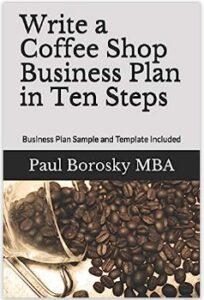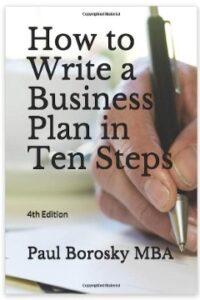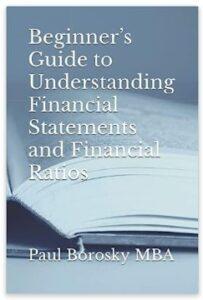How to Write a Coffee Shop Business Plan
The Coffee Shop industry has experienced remarkable growth for several compelling reasons. Firstly, coffee shops serve as welcoming spaces for students and colleagues to meet in a relaxed environment, fostering productivity and collaboration. The social aspect of coffee shops contributes to their popularity and allure.
Moreover, the enduring love and reliance on coffee, with its invigorating caffeine, is another driving force behind the success of coffee shops. Individuals from all walks of life value the beverage's ability to boost energy and motivation.
Additionally, coffee shops go beyond offering quality coffee; they provide various complementary products, such as pastries, breakfast sandwiches, and salads, at select locations. This convenience factor is appreciated by customers who seek a one-stop destination for their culinary needs. Given the coffee shop industry's continuous growth prospects, newcomers and established competitors recognize the importance of having a well-structured coffee shop business plan. To assist with this, our experienced coffee shop business plan writer and financial projection professional have developed valuable tips and tricks to aid entrepreneurs in effectively organizing their ideas and creating comprehensive business plans that include financial projections.
By leveraging these resources, coffee shop owners can navigate the dynamic industry landscape, attract investors, and lay the foundation for a thriving coffee shop business.
CHECK OUT OUR COFFEE SHOP BUSINESS PLAN TEMPLATE!!!
Executive Summary for a Coffee Shop Business Plan.
The executive summary section of a Coffee Shop business plan is crucial for providing an overview of the business and setting the tone for the rest of the document. It should begin by clearly stating the type of business entity, with most coffee shops opting for the limited liability corporation (LLC) structure to ensure adequate protection against potential liabilities.

Following this, it is essential to delve into the specifics of the coffee shop itself. Coffee shops can vary in atmosphere, menu offerings, and target audience. For instance, some coffee shops adopt a modern ambiance and offer diverse coffee selections, exemplified by various Barney coffee shops nationwide. In contrast, Starbucks focuses on a more limited menu while emphasizing high-quality coffee beans. Additionally, Dunkin' Donuts differentiates itself with straightforward and down-to-earth decor, appealing to working professionals. It is crucial to identify and understand the target market before deciding on the menu items and decor choices, ensuring alignment with the preferences and needs of the intended customer base.
By clearly outlining the business structure and describing the coffee shop's unique characteristics, the executive summary serves as a concise introduction that entices readers to explore the rest of the coffee shop's business plan in greater detail.
Need Help With a Coffee Shop Business Plan?
Call or Text Paul, Doctoral Candidate, MBA.
321-948-9588
Email: Paulb@QualityBusinessPlan.com
Hours of Operation: 7 Days a week, 8 am to 9 pm EST.
Our business plan writer is located in Orlando, FL.
CLICK HERE TO CONTACT US TODAY!!!
Company Information for a Coffee Shop Business Plan.
The company information section of a Coffee Shop business plan plays a vital role in clearly understanding the business and its operations. It begins by addressing the problem that the company aims to solve for its customers. In the case of a coffee shop, the problem may revolve around convenience, offering customers an easily accessible and enjoyable alternative to preparing coffee at home.
Further, the company information section should address critical questions related to the business. It starts with identifying the company's name, its legal structure (e.g., LLC, sole proprietorship), and the underlying reasons that necessitate the establishment of the coffee shop. Next, it is essential to outline the menu items and offerings in the coffee shop, highlighting the unique aspects that set the business apart. Emphasizing the problem the coffee shop aims to solve is crucial, as it enables potential investors and stakeholders to understand the value proposition and market demand.
Additionally, the section should provide insights into the operational aspects of the coffee shop. This includes discussing whether the business will have a walk-up counter, a drive-through, or a combination of both. Providing sufficient details about the operational model allows the reader to envision how the coffee shop will serve its customers without divulging excessive information that could potentially enable competitors.
Product Description for a Coffee Shop Business Plan.
The product description section of a Coffee Shop business plan plays a crucial role in detailing the products and services that will be offered. As a coffee shop owner, it is essential to provide a comprehensive overview of the menu items and other offerings that will be available to customers.

Our business plan writer recommends focusing on a limited menu emphasizing high-quality coffee, pastries, and complementary products for startup coffee shops. This strategic approach allows for efficient operations and a clear value proposition. However, as the coffee shop expands and customer feedback is gathered, there may be opportunities to introduce additional menu items such as sandwiches, salads, or even beverages like beer and wine. In addition to the core menu, the coffee shop can also explore merchandise offerings to generate revenue and build brand recognition. Merchandising items such as T-shirts, hats, and coffee mugs provide customers with a tangible way to engage with the brand and foster community.
While outlining the current coffee product descriptions is essential, providing a glimpse into future complementary offerings that may be introduced as the business evolves is equally essential. This demonstrates a forward-thinking approach and highlights the potential for growth and diversification.
Competitive Advantages for a Coffee Shop Business Plan.
The competitive advantages section of a Coffee Shop business plan is crucial for outlining the unique strengths that will set the coffee shop apart from competitors in the industry. As the coffee shop market grows, it becomes increasingly important to clearly define the advantages that will attract customers and drive market share.
One significant competitive advantage for coffee shops is the speed of service. In a fast-paced society where time is of the essence, customers value efficient and quick service. A coffee shop can provide a superior customer experience and gain a competitive edge by streamlining operations and implementing strategies to minimize wait times. Another competitive advantage could be the quality and variety of coffee offerings. In a market saturated with coffee options, showcasing high-quality, ethically sourced beans and providing diverse flavors and brewing methods can attract coffee enthusiasts seeking unique experiences.
Furthermore, creating a welcoming and inviting ambiance can differentiate a coffee shop from competitors. The atmosphere, decor, and comfortable seating contribute to the overall experience and encourage customers to spend time in the shop. Additionally, providing a friendly and knowledgeable staff who can offer personalized recommendations and genuine customer interactions can further enhance the competitive advantage.
Location Description for a Coffee Shop Business Plan
The location description for a Coffee Shop business plan is essential for determining the physical space and general area where the coffee shop will be situated. When considering the facility's interior, it is common for coffee shops to have a minimum of approximately 1,500 square feet. The front-of-house operations and dining area typically occupy about three-quarters of this space. The dining area typically includes tables and barstools for patrons to enjoy coffee and meals. The back-of-house area is designated for dishwashing, storing coffee products, and baking items. The size of the back-of-house area may vary depending on the coffee shop's range of products and services.
Regarding the general location, our business plan writer has observed that coffee shops thrive in areas near interstates or within strip malls with grocery stores. Locations near interstates provide an opportunity to attract passing travelers who may require a coffee break. Strip malls with grocery stores are advantageous for attracting commuters to or from work. Additionally, the coffee shop needs a sufficient parking lot to accommodate easy access and ample space for customers to park their vehicles.
Choosing the right location plays a crucial role in attracting customers and ensuring the success of the coffee shop business. Careful consideration of accessibility, visibility, and the target customer base will create a strategic location that maximizes the coffee shop's potential.
Target Market for a Coffee Shop Business Plan.
The target market for a coffee shop business plan can vary depending on location and demographics. Common target markets for coffee shops include office workers, tourists, and students. It is essential to consider the specific target market based on the geographic variables of the coffee shop's location. For instance, if the coffee shop is near a college or university, the target market would likely include college students. On the other hand, in downtown areas, the target market might consist of office workers or tourists.
It is important to note that identifying a specific target market does not mean excluding other demographics from accessing your products and services. It simply means you expect to attract more customers from your chosen target market. Understanding the target market helps make strategic decisions regarding decor, menu selections, and other amenities that will best appeal to and cater to the preferences and needs of the identified target market.
Furthermore, when considering the target market, it is beneficial to envision complementary products to enhance the overall experience. For example, if the target market includes tourists, offering city or area memorabilia alongside coffee and pastries can provide an additional revenue stream. While this may not generate significant income compared to coffee sales, it enhances the visitor experience and increases profit margins.
Industry Research for a Coffee Shop Business Plan
The industry research section for a coffee shop business plan should provide an overview of the coffee shop and snack industry. Over the past five years, this industry has experienced significant growth, primarily attributed to the overall expansion of the US economy. Additionally, the declining prices of coffee and pastries have contributed to the increasing popularity of coffee shops among consumers.
There have been notable changes within the coffee shop industry in recent years. Customers have demanded healthier menu options, prompting large chains and other coffee shop competitors to incorporate items like salads and protein shakes. Secondly, there is a growing demand for specialty coffees from various regions worldwide, such as Africa and Costa Rica. This shift reflects consumers' desire for unique and high-quality coffee experiences.
Another critical factor in the coffee shop industry is the fluctuating price of coffee beans. As a commodity, coffee prices are influenced by availability, demand, weather conditions, and tariffs. These price fluctuations can impact the net profits of coffee shops. Therefore, coffee shop owners must anticipate and strategically plan for these changes to mitigate potential financial impacts.
Owner and Management Section of a Coffee Shop Business Plan
A coffee shop business plan's owner and management section should highlight the unique aspects of owning and managing a coffee shop. Unlike other businesses, coffee shops are often owned by individual rather than group investors. Managing a coffee shop poses specific challenges, such as high turnover rates in the industry and the need for specialized training for baristas.
To address these challenges, our business plan writer strongly recommends that coffee shop owners establish comprehensive training programs. These programs will ensure that baristas are well-trained and capable of delivering high-quality coffee products to customers. By investing in training, coffee shop owners can maintain consistency in their offerings and provide a superior customer experience.
Additionally, fostering a nurturing company culture is crucial for coffee shop owners. A positive and supportive work environment can help attract and retain employees, reducing turnover and subsequent training costs. Creating a culture that values teamwork, growth, and well-being will improve employee satisfaction and customer service.
Funding Request for a Coffee Shop Business Plan

The funding request section of a coffee shop business plan should provide a comprehensive overview of the financial needs associated with starting or expanding the business. Coffee shop owners must consider various expenses such as coffee brewing equipment, furniture, ovens, and supplies like coffee beans and pastry ingredients. These costs can range from $100,000 to $500,000, depending on the scale and scope of the coffee shop.
Our business plan writer suggests structuring the request using bullet points to present the funding needs effectively. Each bullet point should specify a particular expense category and the associated cost. For instance, one bullet point may outline the back-of-house equipment required, totaling $75,000, while another could address the purchase of tables and chairs amounting to $10,000. This structured approach lets coffee shop owners clearly outline their budgeted needs.
It is crucial to provide a comprehensive breakdown of all the funding requirements in the coffee shop business plan, ensuring no expenses are overlooked. By tallying the total funding amount at the end, readers can easily understand the overall financial scope of the project. This clear and concise presentation of funding needs enhances the credibility of the business plan and helps potential investors or lenders evaluate the financial feasibility of the coffee shop venture.
Financials for a Coffee Shop Business Plan.
When creating financial projections for a coffee shop business plan, it is essential to consider daily revenues and associated product costs. This includes expenses related to coffee beans, pastry ingredients, office supplies, and packaging materials. By extending these projections to 30 days, coffee shop owners can better understand their revenue and cost structure.
In addition to daily projections, it is crucial to factor in fixed costs such as lease payments, utilities, loan repayments, and other monthly expenses. A basic net profit or loss can be calculated by deducting these costs from the projected revenues. This provides an initial understanding of the financial viability of the coffee shop. To create a comprehensive financial model, extending these projections to 12 months and even more to a five-year projection is necessary. This allows coffee shop owners to assess the long-term financial sustainability of their business.
Our team is always available to provide support if you require assistance with your business plan or financial projections for a coffee shop. Feel free to contact us via email or phone; we will gladly assist you in creating a robust financial plan.
Hopefully, these insightful tips and tricks for writing a business plan were helpful. Email or call us if you need help with a business plan or financial projections.
Author: Paul Borosky, Doctoral Candidate, MBA., Author
Owner of: Quality Business Plan, Quality Business Consultant
Date: 7/19/2023